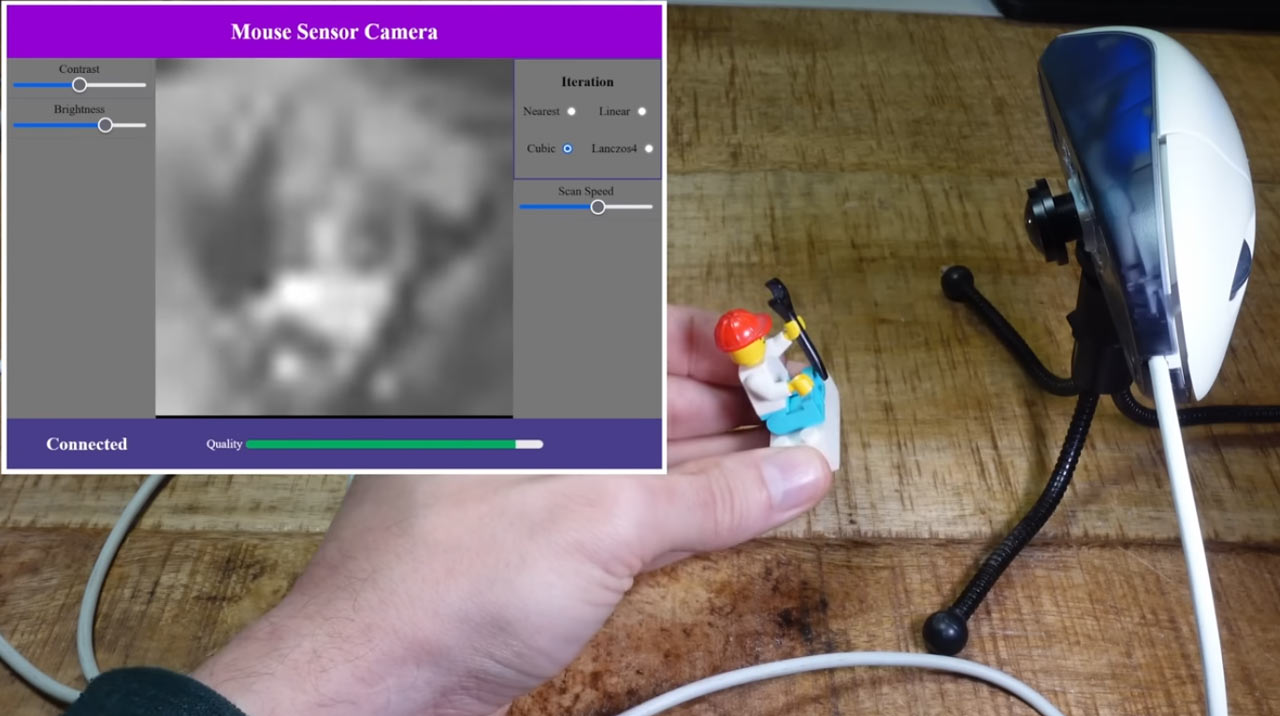Say cheese! This optical mouse is now a camera
We'd probably not use this for the next Teams call

YouTuber Doctor Volt has repurposed an optical mouse to create a camera (h/t Hackaday). The project relied principally on the mouse’s optical sensor, a third-party controller, some software wrangling, and a little bit of 3D printing to tidily secure a Raspberry Pi wide-angle lens in place of the prism. Though we congratulate the good Doctor on a successful project, he was humble enough to admit the camera feed images are only just recognizable.
Early in the video, Doctor Volt dissects a pretty old Logitech mouse. We saw that the optical sensor being used by this geriatric rodent was the ADNS 2610 made by Agilent in 2004. Further investigations revealed that this sensor features an 18x18 array of photodiodes. In the mouse, these would be mounted behind a lens and above a prism that directs light from an LED to your mousing surface. The project proposed this ADNS 2610 sensor would be the heart of the mouse-camera.
To make a neat mouse-camera solution, the YouTuber decided to add an ESP32-S3 chip to work as a microcontroller for the experimental device. Doctor Volt discussed the techniques he used to get meaningful data from the repurposed mouse sensor via the ESP32-S3. You can see in the video that there was desoldering required, and he also had to tinker with software. The software solution wasn’t entirely new, as Doctor Volt recycled a UI that he previously created to display images from a ‘Blu-ray microscope’ project he had worked on.
With the hardware and software in place we get to see the first evidence of the mouse-camera springing to life, the good Doctor decides to demonstrate the mouse ‘scanning’ a 20 Euro banknote in real-time. As the mouse is moved, the UI viewport shows the 18x18 pixels (324 pixels) the mouse sensor is seeing. We don’t know the color depth of the sensor, and the dynamic range seems poor. The YouTuber admits that the closeup image, and its resolution, don’t provide meaningful images at this stage. However, you could recognize some of the tiny European stars and similarly intricate details when they were carefully moused over.
As the YouTuber was satisfied with the progress so far, he wanted to complete the transformation of the mouse into a camera. A wide-angle lens, which was made for a Raspberry Pi camera, was selected to bring the wider world to the mouse sensor.
Powering up and turning the lens to himself, we got to see a pixelated representation of Doctor Volt. It wasn’t the clearest of images, with low contrast in addition to its low pixel density, but there was certainly a human head seen moving around. Doctor Volt mused that he may have become “the first person ever filmed by a mouse sensor.” It was found that the mouse-camera could run at about 3fps without errors of one kind or another.




Wrapping up the project, the YouTuber acquired some 3D printed parts to more securely and tidily mount the Rasberry Pi lens. The result remained a little ugly but we don’t have any other mouse cameras to compare it with. It would be interesting to know whether modern optical mice would have more capable sensors for "mouseography". A quick look over various mouse sensor data sheets seemed to suggest the photodiode array spec isn’t readily shared.
Get Tom's Hardware's best news and in-depth reviews, straight to your inbox.

Mark Tyson is a news editor at Tom's Hardware. He enjoys covering the full breadth of PC tech; from business and semiconductor design to products approaching the edge of reason.